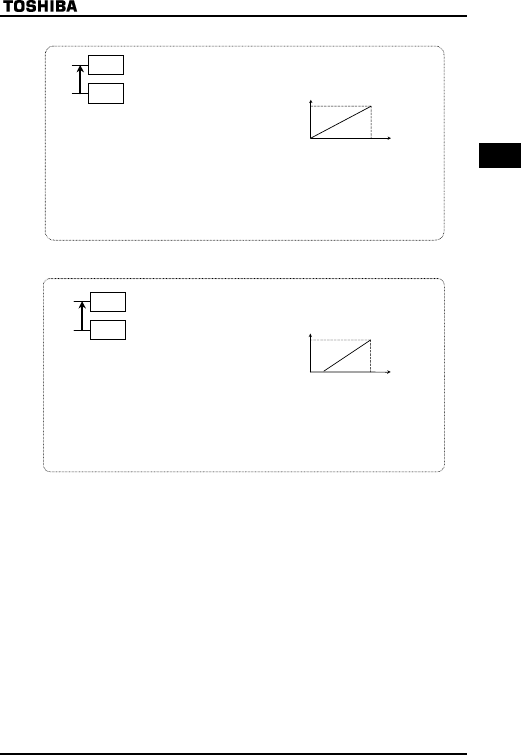
E6581090
C-5
3
2) Setting the frequency using input voltage (0-10V)
★Voltage signal
Setting frequency using voltage signals
(0-10V). For more detailed information
on adjustments, see 6.4.
Frequency
60Hz
0
0Vdc 10Vdc
CC
VI/S3
+
-
: Volta
g
e si
g
nal 0-10Vdc
*The H parameter (VI/S3 terminal function selection) is used to specify a function
for the VI/S3 input terminal. The FCHG parameter (frequency command forced
switching) makes it possible to use both the analog input frequency signal and the
frequency signal set with the internal potentiometer, which can be switched by
activating or deactivating the input terminals.
See 5.1 for details.
Note: The current input and voltage input functions cannot be used at the same time.
3) Setting the frequency using current input (4-20mA)
★Current signal
Setting frequency using current signals
(4-20mA). For more detailed information
on adjustments, see 6.4.
Frequency
60Hz
0
4mAdc 20mAdc
CC
VI/S3
+
-
: Current signal 4-20mAdc
Note: The current input and voltage input functions cannot be used at the same time.
*The H parameter (VI/S3 terminal function selection) is used to specify a function
for the VI/S3 input terminal. The FCHG parameter (frequency command forced
switching) makes it possible to use both the analog input frequency signal and the
frequency signal set with the internal potentiometer, which can be switched by
activating or deactivating the input terminals.
See 5.1 for details.
(4) Setting the frequency by serial communications (HOQF : )
The frequency can also be set from a higher-order external control device via optionally available
communications conversion units (RS2001Z, RS20035, RS2002Z and RS4001Z).


















